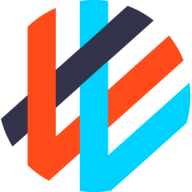

Splunk Observability Cloud and Weaveworks compete in monitoring and lifecycle management. Splunk generally has an upper hand due to lower initial costs and better support quality, whereas Weaveworks offers superior features.
Features: Splunk Observability Cloud provides real-time data analytics, seamless data integration, and advanced alerting capabilities, catering to organizations requiring comprehensive visibility. Weaveworks offers a robust GitOps-based workflow management, automation, and integration with Kubernetes, appealing to teams focused on continuous delivery and microservices management.
Ease of Deployment and Customer Service: Splunk Observability Cloud features a straightforward deployment process complemented by comprehensive documentation and responsive support, easing onboarding. In contrast, Weaveworks involves a complex setup demanding deeper technical integration but offers detailed guidance and reliable support, suitable for technically specialized needs.
Pricing and ROI: Splunk Observability Cloud typically has a lower initial setup cost and offers a quicker ROI due to efficient onboarding and comprehensive features. Weaveworks presents higher setup costs but delivers substantial long-term value, making it a compelling investment for infrastructure management and automation enthusiasts.

Splunk Observability Cloud combines log search, data integration, and dashboards for seamless monitoring, enhancing infrastructure visibility and security. Its cloud integration and scalability support diverse environments, improving operational efficiency.
Splunk Observability Cloud offers comprehensive monitoring tools with user-friendly interfaces, enabling end-to-end infrastructure visibility. Its real-time alerting and predictive capabilities enhance security monitoring, while centralized dashboards provide cross-platform visibility. Users benefit from fast data integration and extensive insights into application performance. Despite its advantages, improvements could be made in integration with other tools, data reliability, scalability, and cost management. Users face challenges in configuration complexity and require better automation and endpoint protection features. Enhancing AI integration, alerts, and adaptation for high-throughput services could further improve usability.
What are the key features of Splunk Observability Cloud?In industries like finance and healthcare, Splunk Observability Cloud is implemented for application performance monitoring and infrastructure metrics. Its ability to track incidents and analyze machine data benefits network infrastructure, while distributed tracing and log analysis aid in tackling security threats. Organizations often integrate it for compliance and auditing purposes, enhancing visibility into network traffic and optimizing performance.
Weave Cloud is a software-as-a-service that simplifies deployment, monitoring and management for containers and microservices. It extends and complements popular orchestrators, and enables developers and DevOps to realize faster deployments, insightful monitoring, visualization and networking.
We monitor all Container Management reviews to prevent fraudulent reviews and keep review quality high. We do not post reviews by company employees or direct competitors. We validate each review for authenticity via cross-reference with LinkedIn, and personal follow-up with the reviewer when necessary.